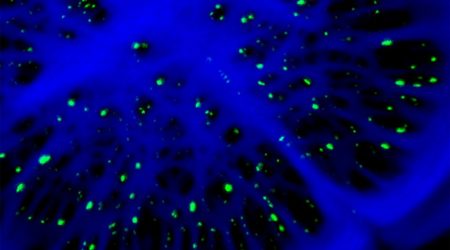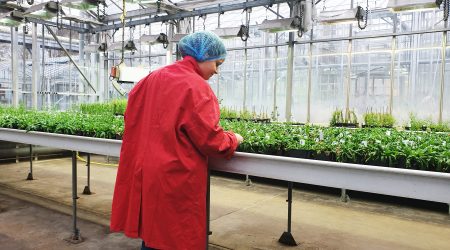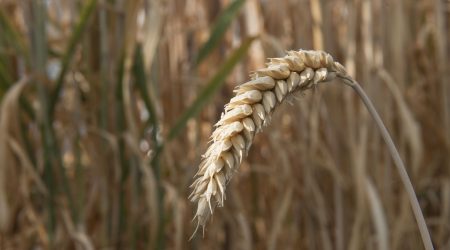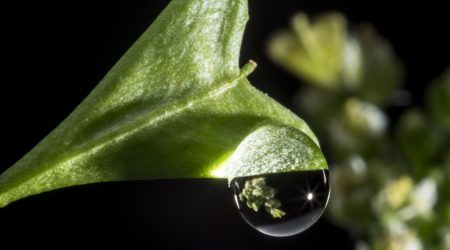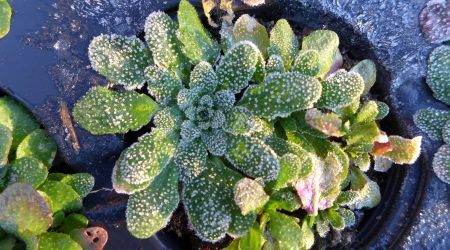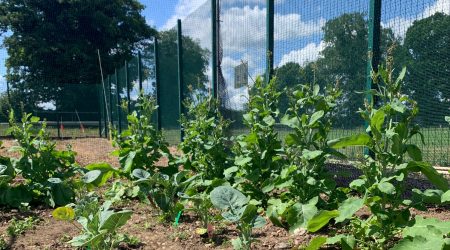The shapes of nature, its fruits, leaves and petals, are a marvel to behold. But what is the function behind these diverse forms?
The research of Professor Lars Østergaard, leader of the Genes in the Environment Institute Strategic Programme at the John Innes Centre, seeks to unpick the purpose of shape in nature.
In doing so, he explains, we may be able to create crops that are resilient to the environmental crisis caused by a warming planet.
The Brassicaceae family includes a host of economically important domestic crops and wild plants such as Arabidopsis and Capsella, which have become essential as model species to study the fundamental principles of plant development.
The family boasts a stunning diversity of fruit forms, and the heart-shaped seed pods of the Capsella genus stand out. However, it is not always obvious why evolution has produced these shapes.
One answer could be seed dispersal.
Some shapes may have evolved because they offer better mechanisms for spreading their ripened seeds at the most opportune time.
In the wild, this may confer a selective advantage. In important crops such as oilseed rape, it might be the difference between seeds laying on the ground or being harvested.
says Professor Østergaard.
“Seed dispersal is a trait that has been controlled for some crops, but not so well for others, and brassica crops, such as oilseed rape, need to be controlled more than they are at the moment.”
Controlling seed dispersal or “pod shatter” is a major issue worldwide for farmers of oilseed rape, who lose between 15% and 20% of yield per year due to prematurely dispersed seeds in the field.
Yields are further threatened by pod shatter due to the increase in global temperatures.
A study by Professor Østergaard discovered that higher temperatures led to the stiffening of cells in the pods where pod shatter takes place, leading to accelerated seed dispersal.
This was true of Arabidopsis and other members the Brassicaceae family, including oilseed rape.
The study also identified the genetic mechanism that organises the plant’s response to higher temperatures – vital knowledge for breeding temperature-resilient crops on a warming planet
“There are many species where seed dispersal is an issue at higher temperatures, such as legumes. We are still learning about these crops and we can use our knowledge to improve seed dispersal.
However, we have found that elevated temperatures accelerate seedpod shattering. So even if you have a genetic variation that works well in an average climate, if there is severe heat or drought, it might not work so well”.
In legumes such as pea, it is speculated that one effect that pod shape could have on seed dispersal is via layers in the pod walls that pull in different directions, producing mechanical tension that builds up and releases.
This mechanism could offer one explanation for surface shape.
A route to understanding shape is being investigated through the sequencing of 700 pea lines from the Germplasm Resources Unit which exhibits a wide range of pod shapes.
By screening this population it may be possible to identify genes that are important for certain aspects of pod growth and shape.
Another hypothesis is that a larger pod surface leads to healthier, more nutritious seeds – with the heart-shaped pods of Capsella genus providing an intriguing explanation.
It’s possible that these flat at surfaces function as solar panels, capturing sunlight. It is known that the heart-shaped pods are more physically photosynthetic, so the photosynthates might then be channelled into the nutrition of seeds.
“Of all the carbons and sugars that are produced in the pod from captured sunlight during photosynthesis, about 50% goes into growing the seeds. So we could imagine an evolutionary edge for Capsella due to its larger, Flatter shape,” says Professor Østergaard.
In the long term, this fundamental knowledge could be translated into commercial crops. Scientists, working with plant breeders, may be able to create a denser oilseed-rape canopy with a bigger pod surface and consequent yield increases.
explains Professor Østergaard.
To achieve this goal, Professor Østergaard sees a future in which science becomes more interdisciplinary, with researchers building networks – bringing together fundamental and applied approaches and working together with industry and other institutes beyond the Norwich Research Park. By linking across different programmes of work it will be possible to provide innovative solutions.
“What I really like about the UKRI-BBSRC funded Institute Strategic Programmes is that, although they are individual grants with their own objectives, they also give us opportunities to interact with other programmes, other institutes with interdisciplinary approaches. The Genes in the Environment ISP works with Designing Future Wheat and the UK-wide brassica programme BRAVO. These are excellent outlets for the work that give real strength and depth to the research.”
Another feature of the strategic programme is that its work is heavily underpinned by technology platforms and the quality of the technical provision at the John Innes Centre, which provides a range of essential services such as imaging, image quantitation, mutant population development and transformation resources, including gene editing.
This last technology holds an important key.
In the year of the UN Climate Change Conference (COP26), gene editing, the subject of a recent DEFRA consultation, is a technology that could be game-changing for the translation of the research of Professor Østergaard and colleagues.
“Our work considers processes in plants – meiosis, seed dispersal, germination and flowering traits – all of which are strongly influenced by temperature. We need to be able to understand and control that and develop crops that are resilient to changes and able to withstand extremes in temperature. Gene editing has immense potential in helping to deliver this vital contribution.”




